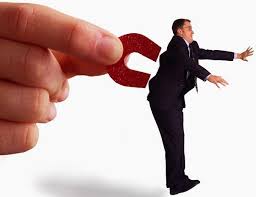Operating leverage: what happens to profit margins if revenues fall. And if it grows up?
 Usually business owners are interested in two interrelated indicators: revenue and profit. Revenue shows how much the company earned, and profit shows how much is left after deducting expenses.
Usually business owners are interested in two interrelated indicators: revenue and profit. Revenue shows how much the company earned, and profit shows how much is left after deducting expenses.
Most likely, if the revenue is higher, then the profit will increase. On the contrary, it also works: if the revenue falls, then the same will happen with the profit. And everything would be very simple if there was a direct relationship between the indicators. But no: the revenue may sink just a little, and this will lead to large losses.
In this article, we will deal with operating leverage: it just talks about the relationship between revenue and profit in your business.
Operating Leverage Formula
Operating Leverage = Profit Margin / Operating Profit
Profit margin is revenue minus variable costs. Variable costs are those that directly depend on revenue, they are also sometimes called cost. Basically, the margin tells you how much of the revenue is “consumed” by the cost of manufacturing your product.
Operating income is your revenue minus all of your operating expenses. That is, all expenses except taxes, depreciation and interest on loans. Operating profit (also called EBITDA) indicates how much a business earns directly from its core activities.
Simplified income statement. To calculate the operating leverage, we need the marginal andrelationship between from it.
Divide the profit margin (2.47 million) by the operating income (1.787 million) and get the operating leverage of 1.38. This means that if revenues increase by 1%, then operating income will rise by 1.38%. And vice versa: if the revenue decreases by 1%, then the profit will decrease by 1.38%.
What the operating lever depends on
The operating leverage depends on the ratio of fixed and variable costs. We have already talked about variable costs – these are those that directly depend on revenue. Constants are, on the contrary, those that do not depend on revenue. You can at least not sell anything at all, but they will still be: salaries, rent, office expenses, and so on.
If fixed costs> variable costs, then the operating leverage will be large. In times of crisis, the company will be less stable, but with an increase in scale, operating profit will grow easier. It’s like a motorcycle: fast, maneuverable – but if you push it a little, the driver is already flying with his helmet forward.
If fixed costs <variable costs, then the operating leverage will be small. This means that in times of crisis, a drop in revenue will not hit the company hard, since most of its costs (variables) will also decrease. By the same logic, it will be more difficult to scale, because the greater the revenue, the more is spent on the cost price.
Continuing our autoanalogy, such a company is like a pickup truck. Compared to a motorcycle, it barely rides. But try to move him – he himself will move whom he wants.
How to Apply Operating Leverage in Business
So we calculated the operating lever, and what to do with it next? Let’s take a look at the example of London Paris Pigeons Up Roof Flares, which deals with excursions in Europe.
Revenue
5,000,000 ₽
Tour guides in the state
twenty
Salary of 1 guide (salary)
125,000 ₽
Fixed costs
2 500 000 ₽
Variable costs
0 ₽
Operating profit
2 500 000 ₽
Operating lever
2
The company had an ambitious plan: to double its revenue next month. The payroll should have remained the same, since there were enough employees for such a number of excursions. The owner calculated his operating leverage and hoped that following the growth in revenue, profit would also double.
But I forgot about the opposite effect – the coronavirus came, excursions were no longer needed.
As a result, instead of a rapid growth in profit, “London Paris Doves Up Roof Flares” received a monthly loss of 2.5 million. But if the owner had not put everything on zero, and would have linked managers at least 25% of the proceeds for the excursion + the rest of the salary, the loss could be cut in half.
If you found your leverage and it turned out to be large, think about it: is it too risky? Are you sure that revenue will increase and not fall?
How to work with an operator if you are going to scale
Operating leverage is an indispensable indicator for companies looking to build momentum. Therefore, at the end of the article I will tell you how to work with it if you are going to scale.
1. Calculate the marginal revenue. For example, the owner knows that one guide does not have time to conduct more than ten excursions worth 50,000 rubles. This means that the maximum revenue per employee per month is 500,000 rubles, and per staff – 10 million rubles.
2. Calculate the operating lever. Compare the estimated revenue with the leverage generated and see how much the new business unit will generate.
For example, we know that our store is now generating revenues of 5 million rubles and a profit of 300,000 rubles, and the operating leverage is 1.5.




